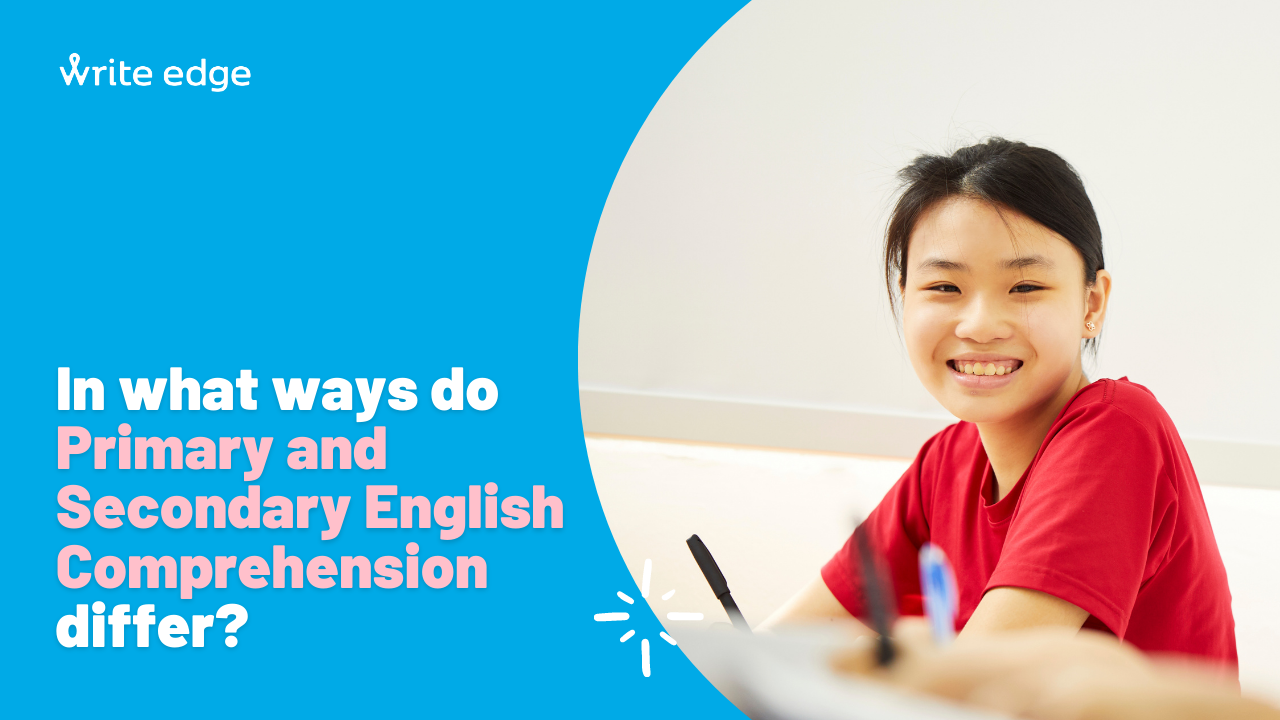Parents often wonder if there is a steep learning curve between the study of Primary School English and Secondary School English. This is because they tend to worry about whether their kids would be able to cope with the transition between different stages, and would like to know if they need to send them to tuition classes early on. For most students, the end goal of studying the secondary school syllabus is to prepare them for the GCE O Level examinations. Every student would desire to achieve the top A1 grade, especially since English is part of the L1R4 or L1R5 combination to qualify for further studies after secondary school. In this post, we will clarify the differences between a common point of assessment in both levels, namely the English Comprehension.
- There is a higher standard of the vocabulary used in Secondary English Comprehension. The progression in the standard between primary school to secondary school comes through the language in the comprehension texts. For students studying at the primary level, there is a strong focus in the building up of the student’s grammar That is why for the texts examined at the primary level, the vocabulary is often limited and simplified to make it more accessible to students. As such, the texts would often be extracted from a novel or a storybook that is written for younger audiences. This allows students to be able to understand the texts easily and therefore have confidence in responding to the questions posed. However, for students studying at the secondary level, they will deal with more advanced texts that challenge their understanding of the English language. Thus, certain words that are used within the texts may be unfamiliar to students, whereby they are unable to understand the meaning. This may prove daunting to some but with sufficient practice and exposure to more texts, the fear of the unknown can easily be overcome.
- The combination of texts across both formats of assessments differ. In Secondary English Comprehension, there are a total of three texts, namely Text 1: visual comprehension, Text 2: narrative text comprehension and Text 3: non-narrative text comprehension that is used to assess students.The difference lies in Text 3, the non-narrative text component that is assessed by Cambridge in the GCE O Level English Comprehension. As a non-narrative text, it is often an expository styled work that requires students to make use of the lines and phrases in the text with examples in their response. Students are also introduced to a brand-new component; an 80-word summary writing task which tests the abilities of students to concisely summarise about eight points into the word count, which is not present in the assessment of Primary English Comprehension. In this component, the specific skill that is tested is the student’s ability to paraphrase the given keywords with synonyms, which can prove to be challenging to students who do not possess a strong pool of vocabulary. At Write Edge, we train our students to be familiarised with wide ranges of vocabulary to better prepare them.
- The style of questioning across both formats of assessments differ, which requires students to learn new skillsets. Different text types would allow for different styles of questioning by examiners. In the GCE O Level English Comprehension, there tends to be a strong emphasis on the interpretation and inference, to understand the purpose and meaning behind the text. More often than not, the questions asked are non-literal and requires deeper thought and consideration by the students. This is obvious as many questions set by Cambridge are followed by the commonly seen statement of “Answer in your own words”, which requires students to interpret the text and infer meaning to come up with their responses, as opposed to copying off directly from the text. In recent years, Cambridge has also placed an increased emphasis on the use of literary devices, such as rhetorical devices, personification and oxymorons, which are commonly seen used in the comprehension questions.
There are clear differences when it comes to the English comprehension component at the primary and secondary level. However, the learning curve is not as steep as some imagine it to be. We should motivate our students to become more passionate towards learning English. As Barack Obama once said, “Reading is the gateway skill that makes all other learning possible”. As parents and educators, we should encourage the habit of reading in children from a young age as reading is a great tool that can promote creative thought and help to groom critical thinking.
At Write Edge, we encourage our students to take ownership of their learning, while providing them with the necessary materials and encouragement for them to explore the English language and fulfil their highest potential. Find out more about our Secondary English Classes here.

